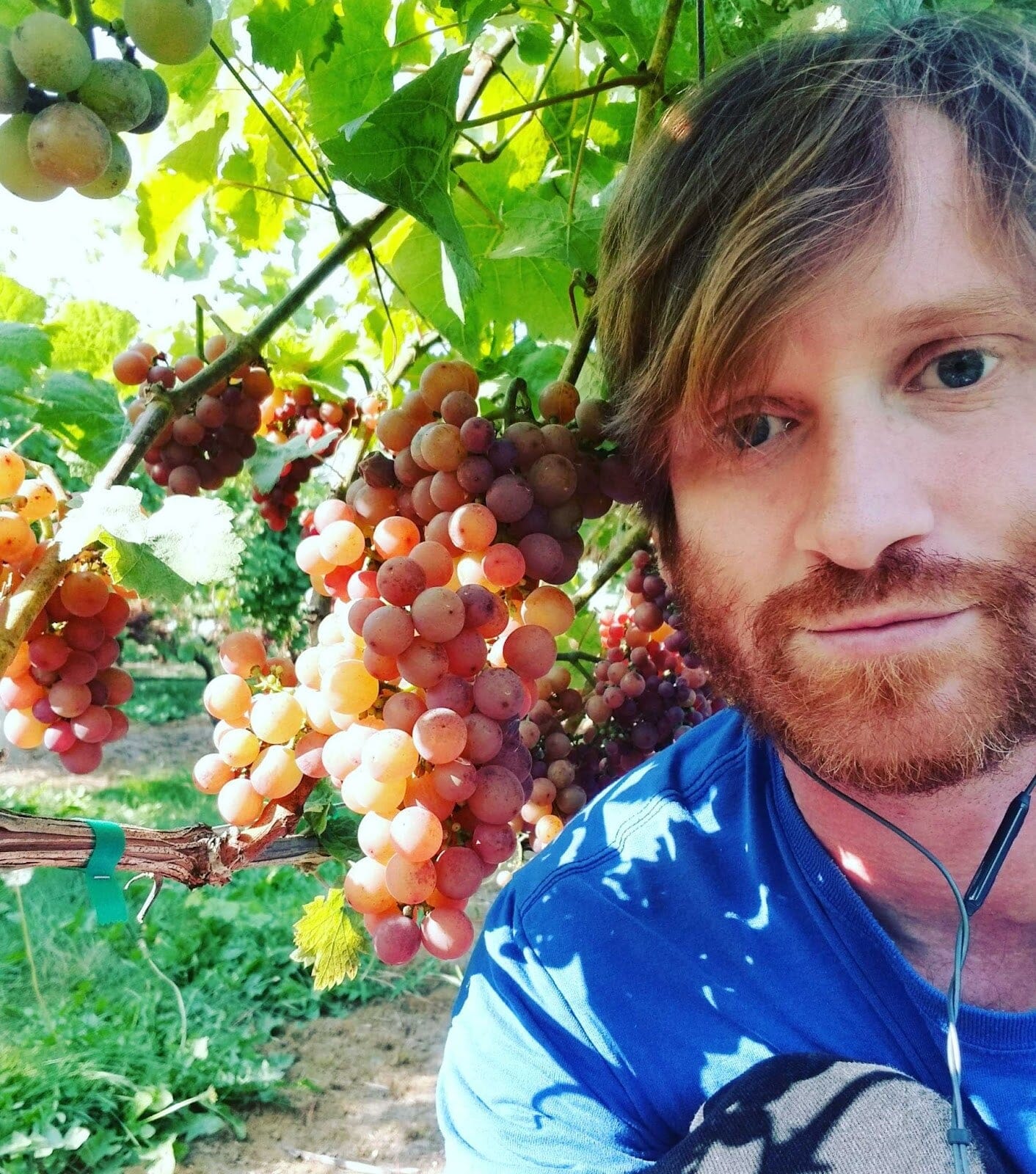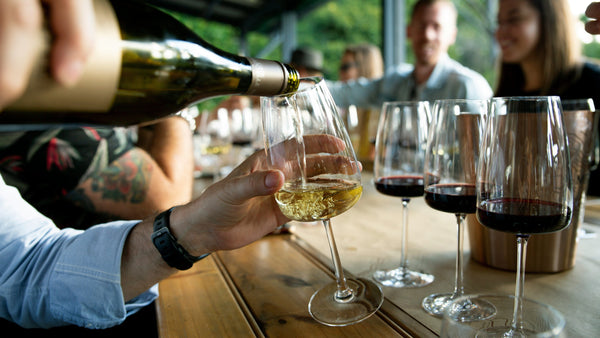
Article submitted by Nathan Griffiths
Siegerrebe grapes days before harvest at Maan Farms in Abbotsford: Featuring Nathan Griffiths - Tour Guide and Wine Maker.
What is Siegerrebe Wine
Siegerrebe (pronounced zee-geh-RAY-buh) is a German white wine grape from but often planted in colder climates like England, Washington, British Columbia’s Vancouver Island, North Okanagan, and Fraser Valley.
History of Siegerrebe Grapes
Siegerrebe translates to “Victory vine” in German and was created by German viticulturist Dr. Georg Scheu (1879 - 1949) by crossing Madeleine Angevine and Gewürztraminer. Like its Gewürztraminer parent, Siegerrebe grows well in British Columbia (gewürztraminer is often my favourite white wine at most BC winery tasting rooms). In 1958, Siegerrebe was given varietal protection and was released for general cultivation in Germany.
Wine Taste and Characteristics

Siegerrebe has blush pink skins, but runs clear when pressed and leads to a deep golden yellow colour and bright flavour. The aroma really sets Siegerrebe apart from other white wines. There is a typical honeysuckle muscat aroma with a hint of lychee undoubtedly from the Gewürztraminer heritage. There is a hint of grapefruit and I personally find that there is a very pronounced fresh peach fuzz aroma that takes me back to my childhood summer days (eating fresh peaches; and not drinking wine). The sweet fruit aromas make you think that the wine is going to have high residual sugar. However, the wine is often much drier than the smell and Gewürztraminer lineage would lead you to believe.
Viticulture and Growing Conditions
The Siegerrebe vine is well suited for colder wine-growing regions, making it a great varietal to cultivate in Western Canada. After the long Canadian winters, Siegerrebe tends to produce new shoots relatively late in the spring compared to other grape varietals. This late “bud-burst” hedges against the risk of a late spring cold snap, that could damage the plant when it is most vulnerable. There is little risk of a winter frost killing the plant in the Fraser Valley, because Siegerrebe can tolerate temperatures as low as −25.8 °C (−14.4 °F), but there is a risk of hurting the quality and quantity of the yield. The fruit ripens early, reducing the risk of an early frost damaging the fruit.
Siegerrebe is well known for its high must weights (the density of sugar and therefore high potential alcohol in the grape). However, there is typically little acidity, making Siegerrebe a challenging varietal for winemakers. Birds and wasps' love of siegerrebe’s high sugar content makes it a challenging grape for our vignerons.
Food Pairing
Siegerrebe pairs well with light and creamy foods. Below are some great options:
Creamy potato or leek soups such as vichyssoise
Fresh fish
Fresh soft cheese
Spicy fish tacos
Siegerrebe use in BC Wines
A few Fraser Valley wineries such as Chaberton, Single Tree, and Maan Farms offer single-varietal Siegerrebe wine to showcase the Fraser Valley’s terroir. However, many wine lovers are still unfamiliar with Siegerrebe, so some wineries in cooler wetter parts of BC use Siegerrebe in their white wine blends such as Pender Island’s Seastar Vineyards.
Book a Fraser Valley Winery Tour and taste the region’s unique wines and terroir with your friends.

Looking for the best Calgary to Banff tour? Explore Banff National Park with a guided day trip from Calgary. Comfortable transportation, scenic stops, and unforgettable views. Book now!

Visiting Vancouver for the FIFA World Cup 2026? Discover the best things to do — from brewery and wine tours to Whistler day trips and local adventures. Book with Canadian Craft Tours!

Discover the best Kelowna wine tours for every type of traveller—from first-timers to wine connoisseurs, bachelorettes, foodies, and more. Sip, relax, and explore the Okanagan.